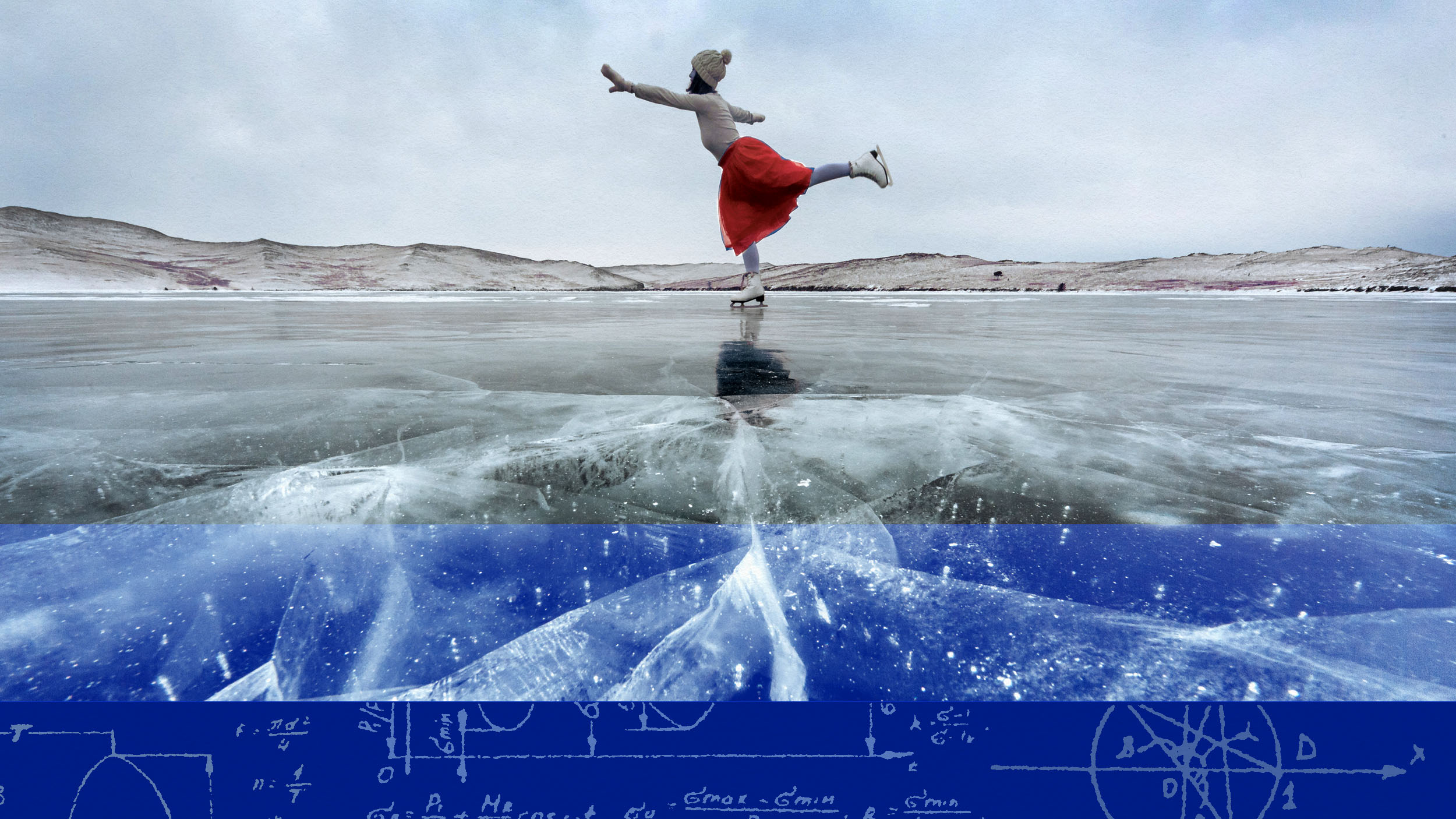There’s a physics trick to keep your shoes from coming untied
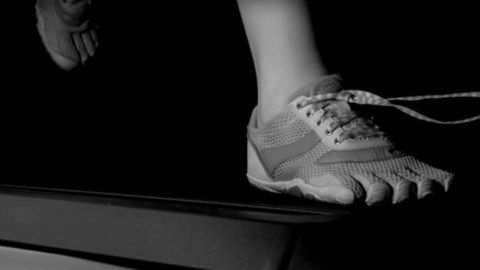
And if you’re experiencing it consistently, you just might be doing it wrong all along.
“I do have a blurred memory of sitting on the stairs and trying over and over again to tie one of my shoelaces, but that is all that comes back to me of school itself.” –Roald Dahl
In order to tie your shoes, there’s a simple knot that almost all of us learn how to make when we’re small children: a “criss-cross and tuck” part, followed by a “loop-and-pull” part. That simple knot has three strong advantages to it over most other types:
- It effectively takes up the rest of the length of the shoelaces, so they don’t drag on the ground.
- It can be easily undone on purpose, simply by pulling on the loose ends deliberately.
- And it forms a relatively strong knot, unlikely to come undone during the course of a day of moderate walking.
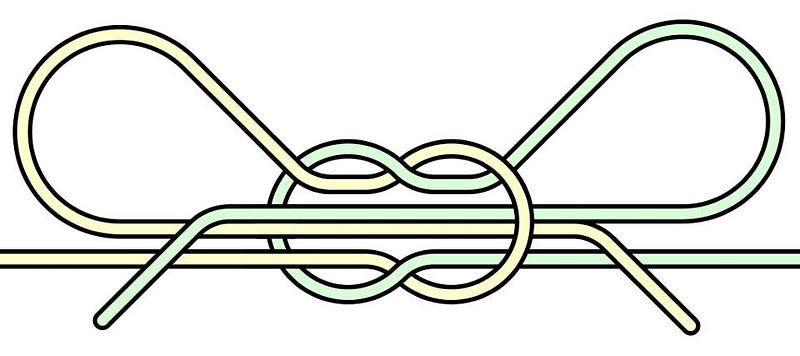
Of course, many of us have experiences where it takes only a few minutes of moderate walking to undo our efforts of tying our shoes. This is true, and scientists have recently made a lot of progress towards understanding why.
The reasons? One has to do with the physics that goes into the forces that walking provides, but the other is a detail you’ve probably never noticed before.

When you tie your shoelaces into a bow, what sort of knot do you end up with? Do you wind up a knot that looks like squared off, where the loops sit evenly and horizontally across the shoe? (As illustrated above.) Or do you wind up with a knot where your shoelaces sit askew, with one loop higher and one loop lower than the original “criss-cross and tuck” component? (As shown below.)
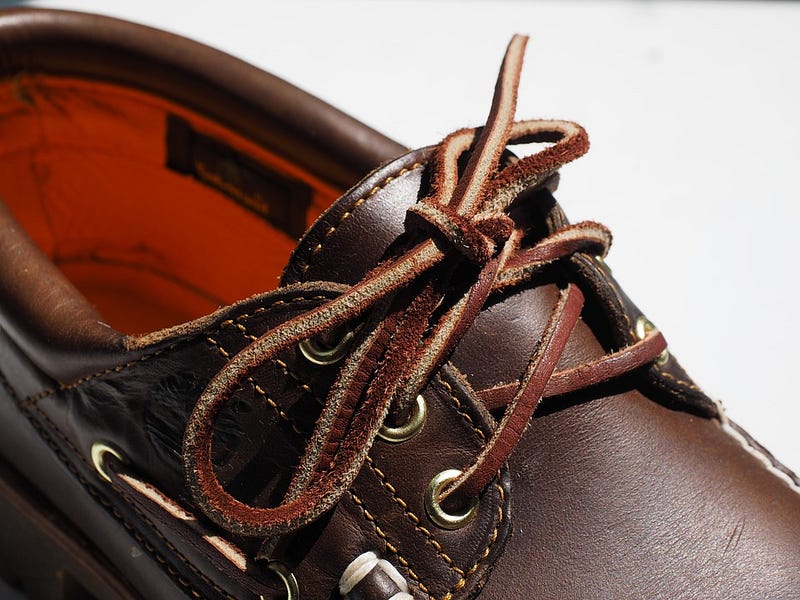
Although both knots come from the same knot-tying method, one of them is far stronger than the other. The squared-off knot, known as a reef knot, occurs when each of the “loose ends” from the bow lies opposite to the direction of the incoming lace (prior to the “criss-cross and tuck” component) once the shoe is tied. The askew knot, known as a granny knot, is the opposite: it occurs when the “loose ends” line up with the direction of the incoming lace. Both knots have the exact same steps that go into them, but the granny knot (below, left) is quite weak, while the reef knot (below, right) is relatively much stronger.
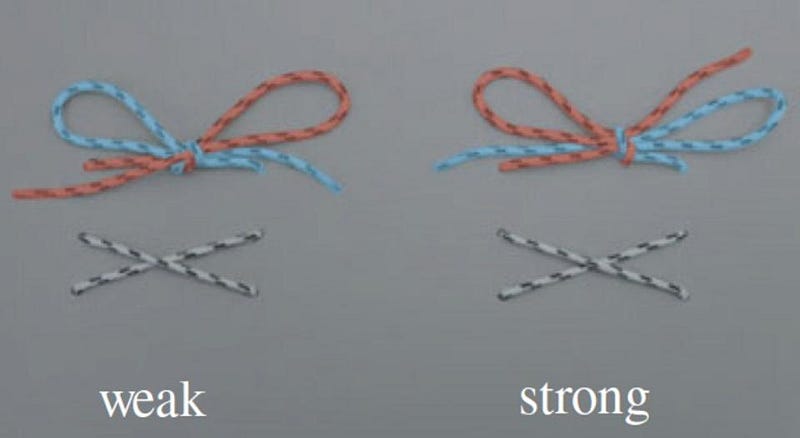
The physical explanation for why the reef knot is stronger than the granny knot is still under investigation, but scientists have a rough idea as to what’s going on. When you walk or run, there are two components of the motion that work to loosen your shoelaces:
- the “whipping” motion of the laces as you move your foot forward exerts pulling forces on the loops,
- and the “impact” forces of your foot on the ground cause the entire shoelace, including the knot, to experience vibrational forces.
With strong enough forces, or even with weak forces that are exerted enough times, either knot will come undone.
But the granny knot will come undone much more quickly and easily than the reef knot. It’s theorized that, in particular, the “whipping” motion is the granny knot’s major undoing, as anyone with long, floppy, askew shoelaces might notice. When you move your foot forward, those loops lag behind the shoe, and when you stop your foot’s forward motion, those loops continue forward, both of which exert forces on the knot. In a properly-tied reef knot, there’s a crimp in the knot that serves to keep the loose ends of the shoelaces from sliding, but the granny knot has no such crimp.
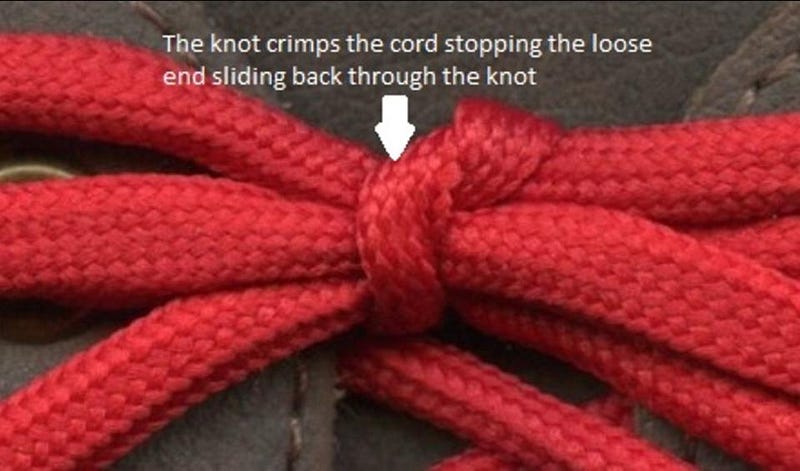
As a result, those of you who tie your shoes in a reef knot will probably find yourselves frequently making it to the end of a day without having to re-tie your shoes, while those who tie the granny knot — particularly if you’re active — will likely have to retie it multiple times a day. But there’s something simple you can do to re-train yourself: examine how you tied your shoes in the first place! Coming up with either a reef knot or a granny knot isn’t merely a matter of coincidence, but rather a matter of technique. And if you have the wrong technique (as, full disclosure, I did until my early 30s), you can re-train yourself.
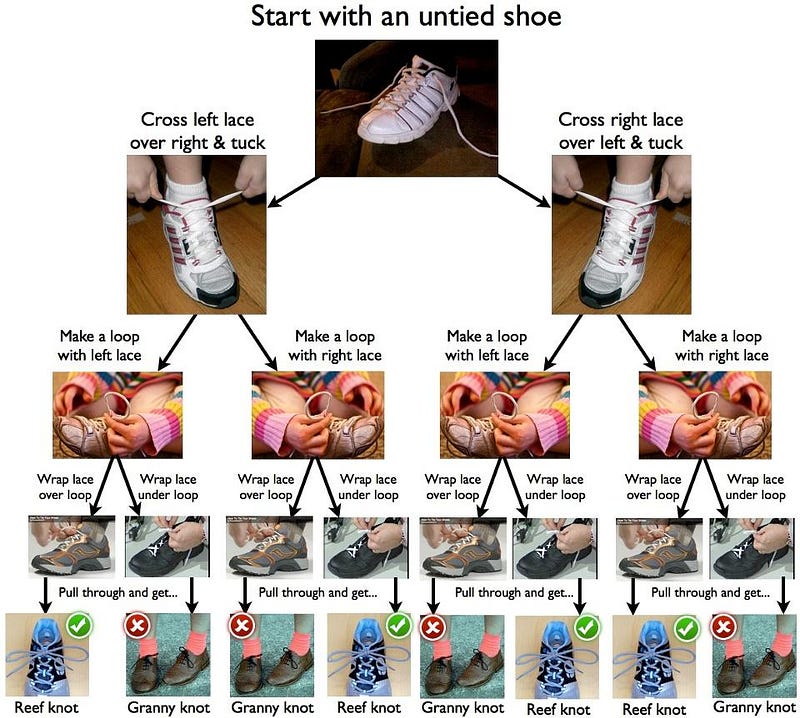
Tying a shoelace knot has, mechanically, three steps where you have two different options for how you tie them:
- A left-over-right or right-over-left “criss-cross and tuck” component,
- Making a loop with either your left lace or your right lace,
- And then wrapping the lace either “over” or “under” the loop before pulling the loops through.
As you can see, above, there are eight different possible outcomes. By switching just one (and only one) step — and I recommend the first one if you’re trying to retrain yourself differently — you can go from a granny knot to a reef knot.

And this should be common knowledge, considering shoes and shoelaces are more than 5,500 years old! It’s incredible that only today, in 2017, are researchers figuring out how shoelaces come untied from our mechanical motions, and that there are still open questions about it. Yet the practical side is clear: if the laces of your shoe are askew, you’ve been tying them wrong all along! Now that you know how to fix it, it’ll cost you an extra ten seconds to tie them for about 6–8 weeks, and that’s how long it will take to retrain your brain. The security of having a well-tied shoe is well worth it!
Starts With A Bang is based at Forbes, republished on Medium thanks to our Patreon supporters. Order Ethan’s first book, Beyond The Galaxy, and pre-order his next, Treknology: The Science of Star Trek from Tricorders to Warp Drive!


